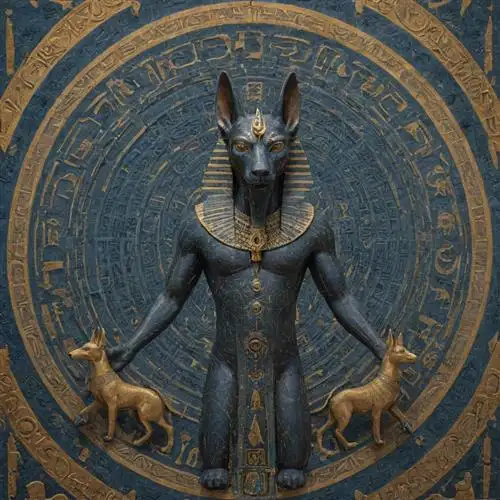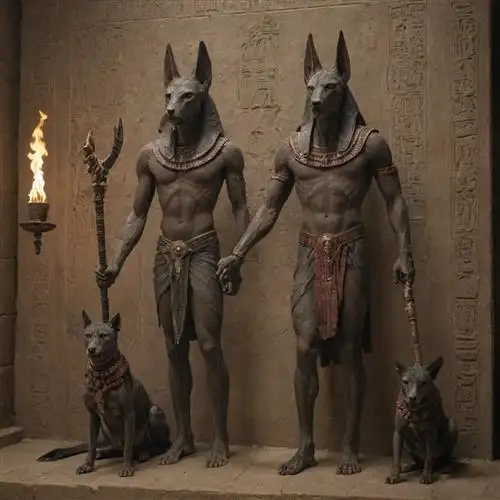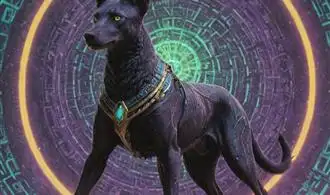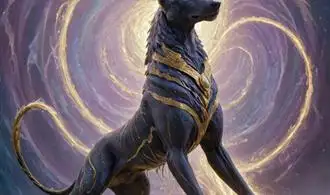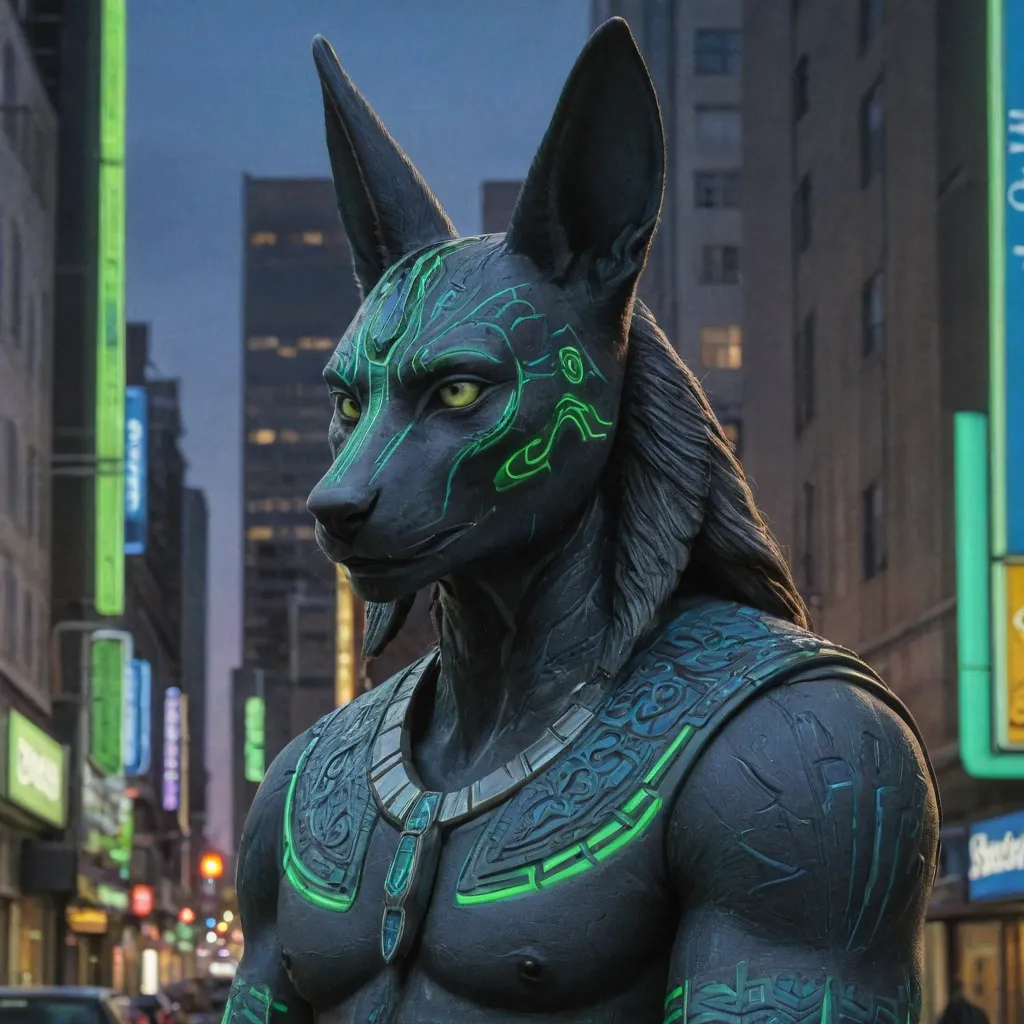
The Origins of Anubis
Anubis, the jackal-headed deity, holds a prominent place in ancient Egyptian mythology and has fascinated scholars and enthusiasts alike. Tracing the origins of this enigmatic figure unveils a rich tapestry of beliefs and cultural influences that shaped the development of this iconic divine representation.
The roots of Anubis can be traced back to the pre-dynastic period of ancient Egypt, where jackal-like creatures were revered for their association with the afterlife. These canine-like animals were often found in the desert regions, scavenging for food and guarding the burial sites of the dead. This close connection between the jackal and the realm of the deceased laid the foundation for the emergence of Anubis as the god of embalming and the protector of the dead.
In the early dynasties, Anubis was primarily worshipped in the Cynopolis region, where the jackal was venerated as a sacred animal. The city of Cynopolis, or "City of the Jackal," served as a center of Anubis' cult, solidifying the deity's importance in the religious landscape of ancient Egypt.
As the cult of Anubis spread throughout Egypt, the jackal-headed deity gradually assimilated aspects of other deities, such as Wepwawet, another canine-like figure associated with the afterlife and military campaigns. This process of syncretism, where various deities were combined or intertwined, further reinforced Anubis' multifaceted role and symbolic significance.
Anubis' iconography and attributes evolved over time, reflecting the changing cultural and religious dynamics of ancient Egypt. The jackal-headed figure was often depicted holding a crook and flail, symbols of divine kingship, highlighting Anubis' connection to the afterlife and the transition from mortal to divine realms.
The importance of Anubis in the Egyptian pantheon is further underscored by his prominent role in the funerary rituals and beliefs. As the god of embalming and the protector of the dead, Anubis was responsible for guiding the deceased through the complex process of mummification and ensuring their safe passage to the afterlife.
Anubis Iconography and Depictions
Anubis, the enigmatic jackal-headed deity of ancient Egypt, is a figure of profound significance in the realm of Egyptian mythology and symbolism. As the guardian of the dead and the embalming process, Anubis's iconography and depictions hold a wealth of esoteric meaning that offer deep insights into the ancient Egyptian worldview. From his distinctive canine features to the intricate rituals associated with his worship, Anubis's symbolism is a tapestry of intricate layers, each thread woven with the fabric of Egyptian cosmology.
One of the most striking aspects of Anubis's iconography is his canine or jackal-like head. This unique feature is not merely a stylistic choice, but rather a carefully crafted representation of Anubis's role and attributes. The jackal, a creature that was believed to roam the necropolis and feed on the dead, was a symbolic embodiment of Anubis's domain – the realm of the afterlife. The black color of Anubis's head is also significant, as it was associated with the decomposition of the body and the fertile, life-giving soil of the Nile River valley.
In addition to his distinctive head, Anubis is often depicted holding a variety of objects that further elucidate his role and responsibilities. The crook and flail, for instance, are symbols of kingship and divine authority, highlighting Anubis's status as a powerful and revered deity. The scale, which Anubis is sometimes shown holding, represents the weighing of the heart ritual, a crucial step in the ancient Egyptian afterlife journey where the deceased's heart was weighed against the feather of truth.
Beyond these iconic visual elements, Anubis's depictions often feature him in various postures and contexts, each of which adds nuance and depth to his symbolic meaning. For instance, Anubis may be shown standing guard over the deceased, lying beside a mummy, or even kneeling in a posture of reverence and supplication. These diverse representations reflect the multifaceted nature of Anubis's role, from the protector of the dead to the intermediary between the living and the divine.
Interestingly, Anubis's iconography also reveals the complex interplay between Egyptian deities and the blending of their respective domains. In some instances, Anubis is depicted with the head of a falcon, a feature more commonly associated with the god Horus. This convergence of attributes underscores the fluidity and interconnectedness of the Egyptian pantheon, where deities could share or borrow certain symbolic elements from one another.
The Role of Anubis in Egyptian Mythology
Anubis, the jackal-headed god, holds a pivotal position in the pantheon of ancient Egyptian mythology. As the god of the dead, embalming, and the afterlife, Anubis played a crucial role in guiding the deceased through the intricate and mystical journey of the afterlife.
In Egyptian belief, Anubis was responsible for the mummification process, ensuring the proper preservation and preparation of the body for the journey into the afterworld. He was believed to be present at the moment of death, protecting the body and guiding the soul into the afterlife. Anubis's role in the embalming process was vital, as he was responsible for the careful removal of the internal organs, which were then placed in canopic jars for preservation.
The importance of Anubis in Egyptian mythology is further highlighted by his presence in the ritual of the "weighing of the heart." During this pivotal moment, the deceased's heart was weighed against the feather of Maat, the goddess of truth and justice. Anubis, as the guardian of this sacred ritual, would oversee the proceedings, ensuring the fairness and accuracy of the judgment.
Anubis's connection to the afterlife extended beyond the embalming and judgment process. He was also believed to be the protector of graves and cemeteries, ensuring the safety and security of the deceased. Additionally, Anubis was responsible for guiding the deceased through the underworld, navigating the complex and treacherous pathways that led to the ultimate destination of the afterlife.
The symbolism of Anubis in Egyptian art and iconography is equally captivating. The jackal-headed figure of Anubis is a powerful and instantly recognizable representation of his role as the guardian of the dead. The jackal, a scavenger known for its presence in cemeteries, was chosen as Anubis's animal form, further emphasizing his connection to the afterlife and the realm of the dead.
Anubis and the Mummification Process
Anubis, the jackal-headed deity, played a pivotal role in the mummification process of ancient Egypt. As the god of embalming and the protector of the dead, Anubis oversaw every step of the intricate ritual, ensuring the deceased's safe passage to the afterlife. Central to his responsibilities was the mummification process, a complex series of procedures designed to preserve the body and transform it into a vessel for the soul.
The mummification process, under the watchful eye of Anubis, typically began with the removal of the internal organs, which were placed in canopic jars and guarded by the four sons of Horus. The body was then carefully dried using a natron salt mixture, a process that could take several weeks. Anubis was believed to guide the embalmers, imparting his knowledge and ensuring the utmost care and precision were taken during this delicate stage.
Following the drying process, the body was wrapped in linen bandages, a task that required meticulous attention to detail. Each layer of the wrapping was imbued with spells and amulets, invoking the protection of Anubis and other deities. The wrapped body, now transformed into a mummy, was then adorned with a mask bearing the iconic jackal-like features of Anubis, further emphasizing his role as the guardian of the deceased.
The mummification process did not end with the physical preparation of the body. Anubis was also responsible for the ritual "Opening of the Mouth" ceremony, where the mummy's senses were restored, allowing the soul to reconnect with the physical form. This ceremony was crucial, as it enabled the deceased to partake in the offerings and rituals necessary for a successful journey to the afterlife.
The Continued Relevance of Anubis in Modern Times
Anubis, the ancient Egyptian deity associated with mummification, the afterlife, and the protection of the dead, continues to hold significant relevance in the modern era. Despite the passage of millennia, this enigmatic jackal-headed god remains a captivating figure, inspiring a growing interest among scholars, spiritualists, and the general public alike.
One of the primary reasons for Anubis' continued relevance lies in the universal human fascination with death and the afterlife. As a deity tasked with guiding the deceased through the complexities of the afterworld, Anubis offers a tangible, relatable link to the mysteries of the hereafter. This connection resonates with individuals seeking a deeper understanding of their own mortality and the processes involved in the transition from life to death.
Moreover, Anubis' association with the mummification process has made him a symbol of preservation and transformation. In a world increasingly focused on issues of sustainability and environmental conservation, the Anubis archetype serves as a powerful reminder of the importance of maintaining and honoring the natural cycle of life and death. This symbolic resonance has led to the integration of Anubis imagery and iconography in various eco-conscious and wellness-oriented movements.
Furthermore, the archetypal symbolism of Anubis as a protector and guide has found new applications in the modern era. Mental health professionals, for instance, have drawn parallels between Anubis' role in shepherding the deceased and the therapeutic process of helping individuals navigate emotional and psychological challenges. This interpretation has led to the incorporation of Anubis-inspired imagery and practices in various forms of therapy and personal growth modalities.
Beyond the realms of spirituality and psychology, Anubis' continued relevance is also evident in the realm of popular culture. The iconic jackal-headed deity has appeared in numerous films, television series, video games, and works of literature, captivating audiences with his enigmatic presence and the rich tapestry of ancient Egyptian mythology. This widespread cultural fascination underscores the enduring appeal of Anubis as a symbol of the human condition and the eternal quest for meaning.


